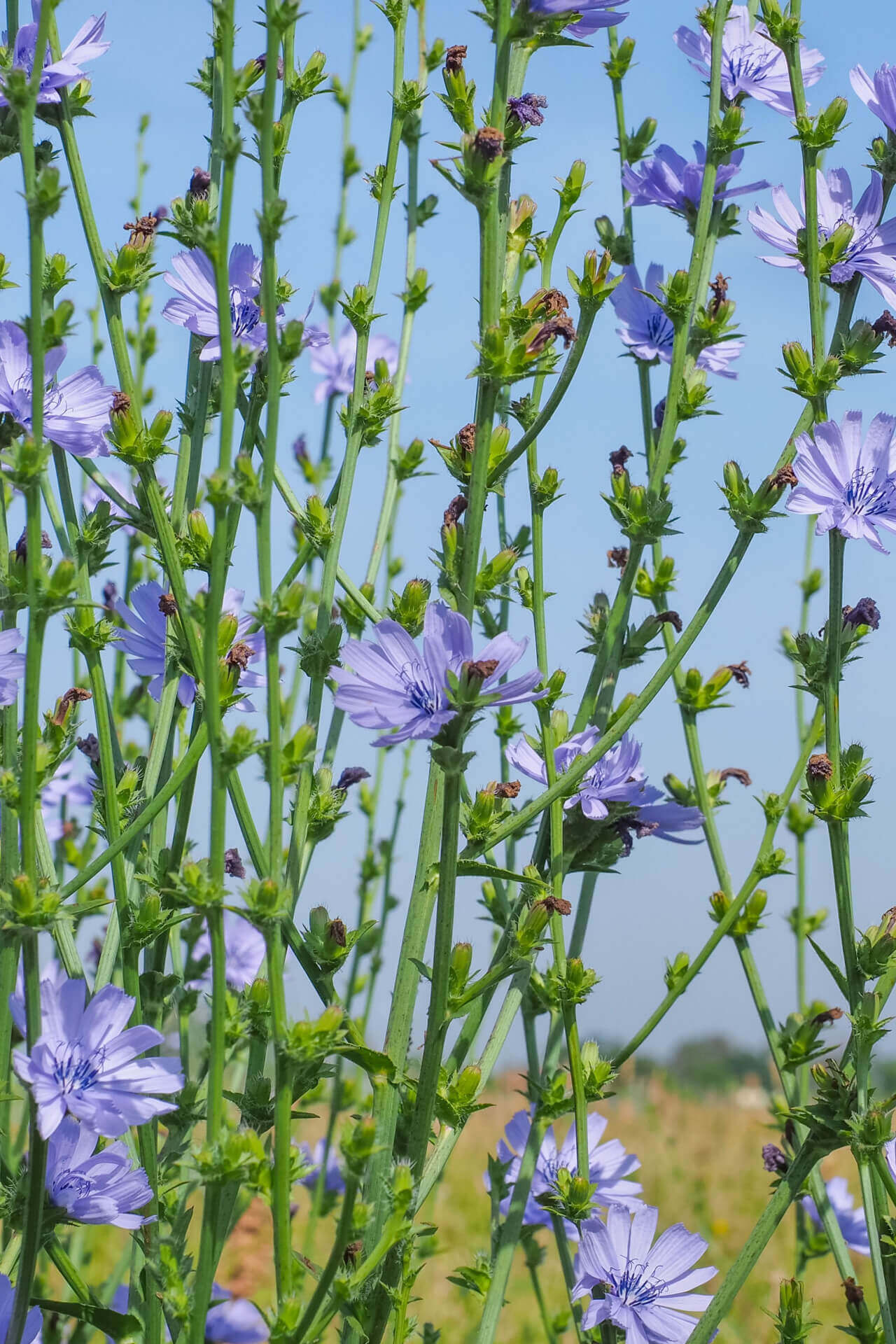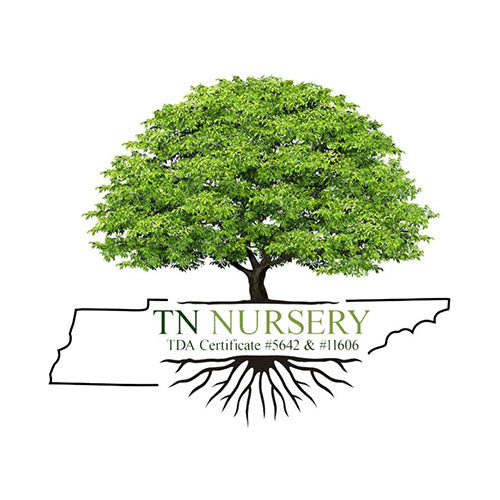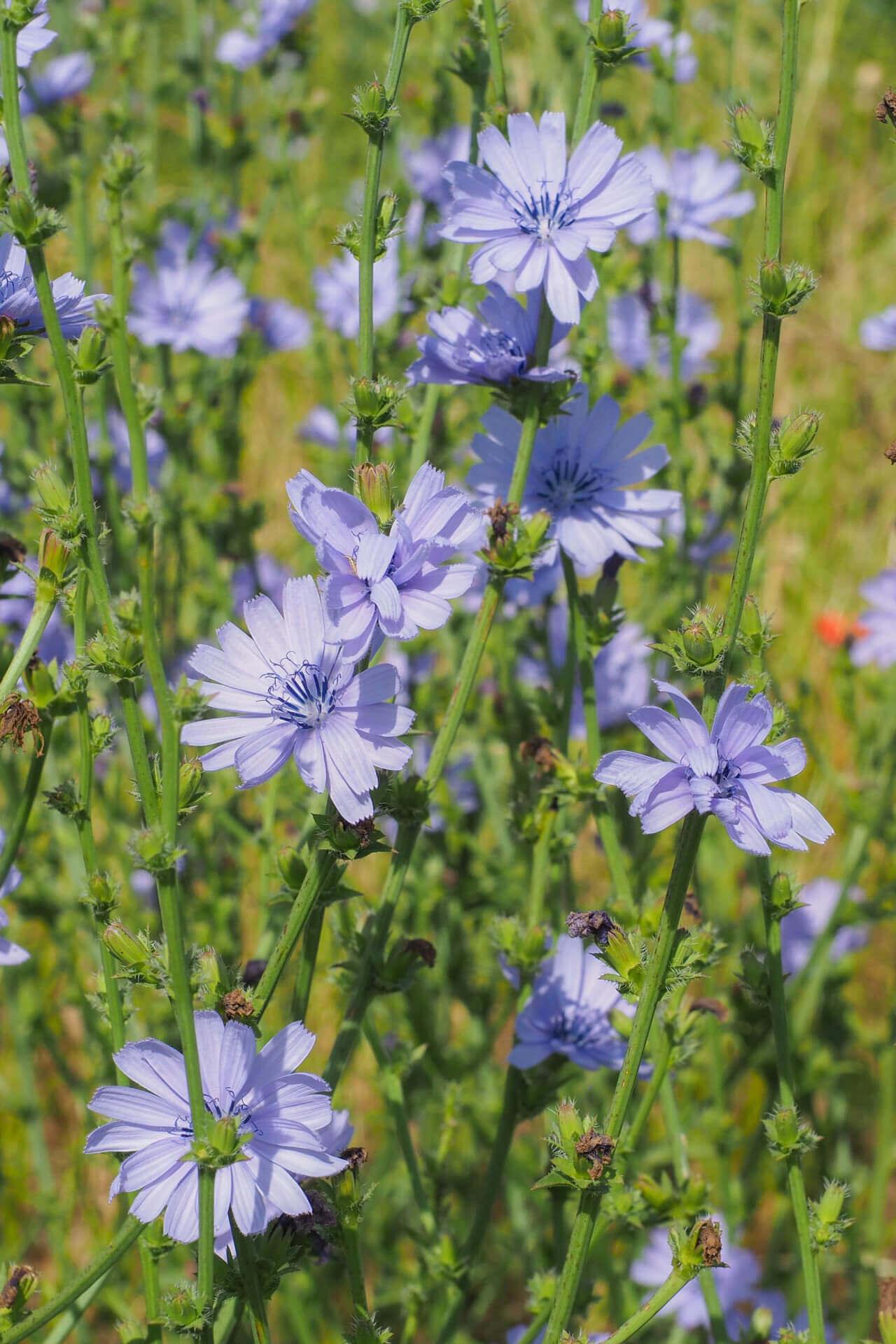


Chicory
Cichorium intybus, commonly known as chicory, boasts a rich agricultural heritage and is an incredibly versatile plant. This hardy and adaptable herbaceous perennial has numerous positive attributes that make it a valuable addition to gardens and agriculture.
One of the most distinctive features of it is its attractive foliage. The plant produces deeply lobed, lance-shaped leaves that are usually a vibrant green. These leaves are not only visually appealing but also nutritious, often used as a leafy green vegetable in salads or as a cooked green in various cuisines.
It is valued for its versatility in cultivation. It can thrive in various conditions, including sun and shade, making it suitable for different garden settings. Its adaptability to different soil types, including well-drained sandy soils and clayey substrates, further enhances its versatility and ease of cultivation.
Chicory Has Beautiful Flowers
Chicory is also appreciated for its ability to produce colorful and attractive flowers. The plant bears bright blue to lavender-blue daisy-like flowers on tall, slender stems. These blooms provide a cheerful display in gardens and are an important nectar source for pollinators like bees and butterflies. In addition to its ornamental uses, it has been historically cultivated for its role in forage and livestock feed. The leaves and roots of certain chicory varieties are highly nutritious and palatable to livestock, making them a valuable component of pasture and forage mixtures.
In summary, chicory is a versatile and valuable plant known for its attractive foliage, adaptability to various growing conditions, culinary uses, coffee substitute production, ornamental qualities, and contribution to forage and livestock feed. Whether grown for its greens or cosmetic appeal, it is a plant with a rich history and a wide range of positive attributes that continue to make it a cherished addition to gardens and agricultural landscapes.
Buy Chicory At Wholesale Nursery Co
- Choosing a selection results in a full page refresh.
- Opens in a new window.



